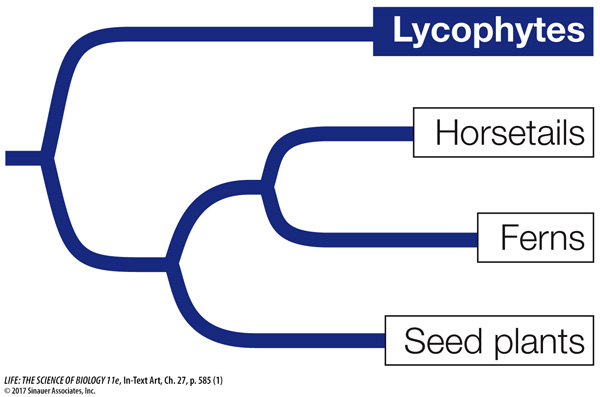The lycophytes are sister to the other vascular plants
585

The club mosses and their relatives, the spike mosses and quillworts, are collectively called lycophytes. The lycophytes are the sister clade to the remaining vascular plants (see Figure 27.1B). There are relatively few (just over 1,200) surviving species of lycophytes.
The lycophytes have true roots that branch dichotomously. The arrangement of vascular tissue in their stems is simpler than in other vascular plants. They bear simple leaflike structures called microphylls, which are arranged spirally on the stem (Figure 27.14A). Growth in lycophytes comes entirely from apical cell division. Branching in the stems, which is also dichotomous, occurs by division of an apical cluster of dividing cells.

The sporangia of many club mosses are aggregated in conelike structures called strobili (singular strobilus; see Figure 27.14A), which are clusters of spore-